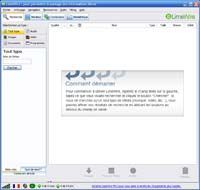You're in line for a movie when a great song plays over the sound system. Although you like the song, you have no idea what it's called or who sings it. You pull out your cell phone, dial a number and hold the phone toward the speakers. In a few seconds, you receive a text message with the name of the song, the artist's name and even a link you can follow to buy a copy.
The service you called uses content-recognition software to identify the song. These programs are helpful if you want to learn about a song playing nearby. They can also help to curb copyright infringement, which is a huge issue for independent artists and corporations alike.
Advertisement
Peer-to-peer networks, file-sharing services and heavy hitters like YouTube provide people with lots of opportunity to access content without paying for it. Until recently, companies had to rely on a human being to detect copyright violations and then take action. Sites like YouTube normally count on users to report inappropriate material, but some don't consider clips that violate copyright law to be inappropriate. At the moment, most companies have to rely on employees to uncover proprietary video footage and log a report. It's a tedious, inefficient process that may soon become unnecessary thanks to content-recognition software. In this article, we'll explore exactly how the process works and how this software can help both people and businesses.






